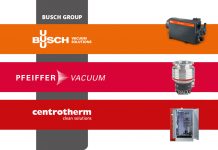Charles River Associates investigates how chemical companies can help improve their performance and reposition for success in an ever-changing market environment. By Arnie Lowenstein; Rick Eno; Zack Wu.
The small and mid-cap sector of the chemical industry has undergone broad structural change over the last decade. We have witnessed significant consolidation, numerous mergers, spinoffs, active portfolio restructuring, and selected privatisations. All these actions have been designed to improve performance and reposition companies to succeed in a changing market environment.
Through analysing the performance of approximately 40 small and mid-cap chemical companies over the past five years, we looked to isolate the portfolio characteristics, supporting initiatives and strategic priorities, which distinguish the leading performers in the sector.
Table 1 below summarises the results highlighting the large performance differentials between top tier and fourth quartile players over the period 2017-22 and more specifically in the period of strong market performance from 2016-21. It also shows their relative resilience to the market downturn in 2022 compared to peers.
| Market Cap 3 mnth avg as of 21/12/22 |
5 Year TSR (31/12/17 – 31/12/22) | 5 Year TSR (31/12/16 – 31/12/22) | 1 Year TSR (31/12/21 – 31/12/22) | TEV/EBITDA Multiple (TEV as of 31/12/22, NTM EBITDA |
EBITDA CAGR% (2017-2022) |
|
| Avg of 1st quartile companies | $4.6bn | 10% | 16% | -6% | 10.0x | 11% |
| Avg of 4th quartile companies | $1.7bn | -18% | -3% | -31% | 8.0x | -5% |
| Overall Average (Total of 38 companies) | $3.9bn | -3% | 7% | -17% | 8.5x | 1% |
Themes that Distinguish Top Performers
The analysis identified four themes that characterise the leading performers:
1. Portfolio coherence – Companies that actively realigned around a few connected businesses in which they have an advantaged and scaled position are strongly represented in the top quartile. Poorer performers tend to be companies with multiple small, often sub-scale businesses that over time lack the strength to support leading performance.
2. Focus on specialties – Companies whose portfolio’s ‘center of gravity’ is on or has actively shifted toward higher performing, value-added specialties are typically among the top tier. These specialty businesses, however, must be large enough to be the principal drivers of growth, margins and, therefore, overall value creation. Adding specialties to a largely commodity business base that remains the primary driver of value, has typically been associated with both lagging TSR performance and relatively low EBITDA multiples.
3. End market positioning – A third distinguishing feature of leading performers is the strength of their positioning in high-growth end markets supported by favourable macro / industry trends (e.g., electronics, life science, personal care, and hygiene). End market positioning has become a more important factor over the last several years owing to the structural changes in the economy driven by the energy transition, the pandemic and rapid technology evolution.
4. A steady program of margin / EBITDA improvement is a threshold requirement for leading performance. Such improvements are achieved through a range of levers including manufacturing / operational measures, supply chain improvements and pricing. In addition, a systematic product / application development program to drive innovation and support a higher value-added product and service offering is key.
Questions Management Need to Address
The path towards top tier performance is company-specific but addressing the following questions can help define the appropriate approach for your company.
- What is the quality of your core businesses, and can they form an attractive and growing base around which to build a company that can deliver leading performance?
- What is the end state or vision for the portfolio and your primary sources of advantage or distinctiveness in the sector?
- What is the right path to develop the desired portfolio, and can sufficient scale be maintained during the transition, or will it be necessary to ‘shrink-to-grow’ (a very difficult strategy to execute as a public company)?
- Is a stepwise or bold plan the right approach recognizing that leading performers who shifted their portfolio focus typically adopted very deliberate and staged programs?
- How to ensure strong ongoing commercial and operational execution that provides a foundation of steady EBITDA improvement?
- How to establish a growth and innovative culture which can sustain profitable growth?
What is the main lesson?
The principal lesson is that small and mid-cap companies, more than ever, need to focus on establishing a coherent portfolio with meaningful business linkages centered, to the extent possible, around high-value specialty businesses. The journey begins by setting out a clear vision for the portfolio built on a foundation that drives steady margin and EBITDA improvement.
While it is certain that the transformation journey will face challenges, maintaining a focus on the desired portfolio end state offers management the opportunity to drive substantial shareholder value.









